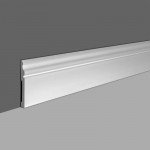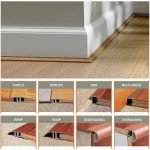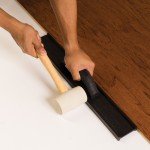28 Jan


Posted By
0 Comment(s)
915 View(s)
Hardwood flooring is a popular choice for many homeowners due
to its durability, natural beauty, and versatility. The installation process
for hardwood flooring can vary depending on the type of hardwood and the subfloor,
but generally it involves the following steps:
- Preparation:
The first step in installing hardwood flooring is to prepare the subfloor.
This includes checking for any unevenness and leveling the subfloor with a
self-leveling compound, if necessary. The subfloor must be clean, dry, and
free of debris.
- Layout:
The next step is to lay out the hardwood flooring in the room to ensure
that the final installation will be visually pleasing. This includes
determining the direction of the planks, determining where to start the
installation, and making any necessary cuts.
- Installation:
The most common method of hardwood flooring installation is the nail-down
method, which involves nailing the hardwood planks to the subfloor.
Another method is the floating method, where the planks are glued together
and not attached to the subfloor. The third method is Glue-down method,
where the planks are glued to the subfloor. It's important to follow the
manufacturer's instructions for the specific product you are using.
- Finishing:
Once the hardwood flooring is installed, it will need to be finished. This
includes sanding the surface to smooth out any imperfections and to
prepare it for staining or sealing. The surface will then be sealed with a
polyurethane coating to protect it from scratches, spills, and wear.
- Cleaning
and Maintenance: The final step is to clean the floor and maintain it.
Hardwood floors require regular cleaning, such as sweeping and vacuuming,
and occasional waxing or polishing to keep them looking their best.
It is important to note that hardwood flooring installation
is best done by professionals, as it requires specialized tools, and knowledge
to avoid mistakes that can be costly. It is also important to note that the
installation process can vary depending on the type of hardwood and the
subfloor, so it's important to follow the manufacturer's instructions and
consult with a professional if you have any questions or concerns.









